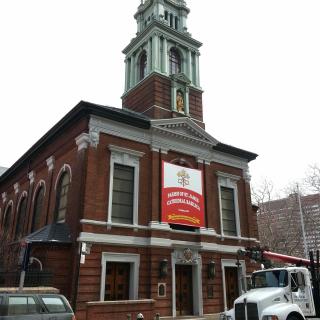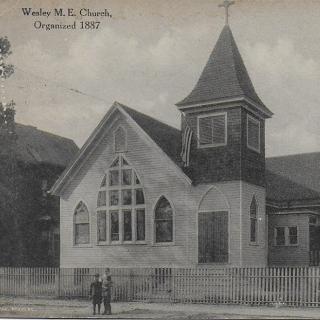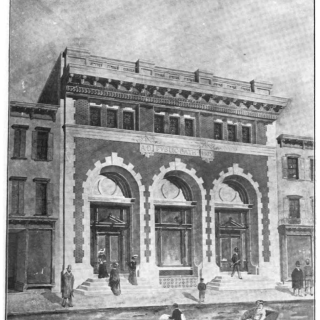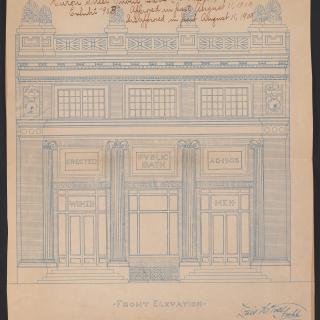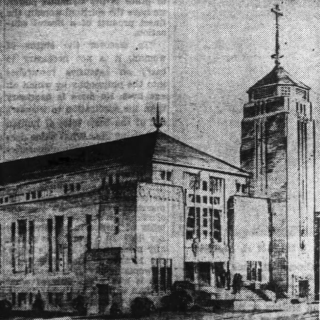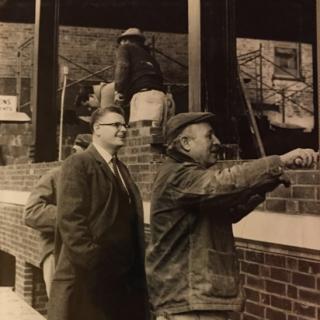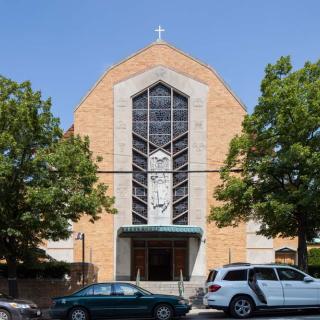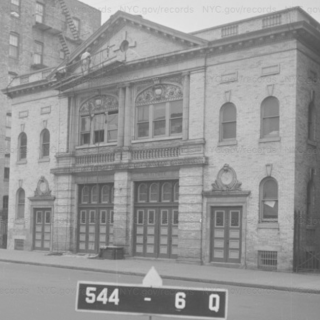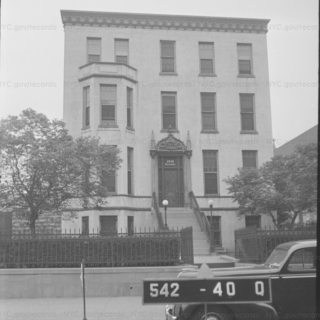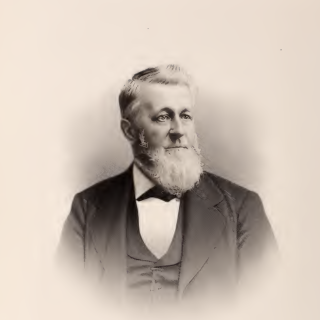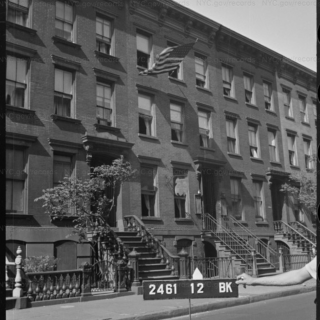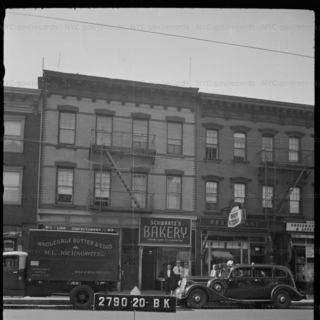St. James Cathedral Basilica is the second church building to serve this parish. The first church was constructed in 1822 and was the first Roman Catholic church on Long Island. In 1852, St. James became the cathedral parish for the newly-established Diocese of Brooklyn under Bishop Loughlin.
New Entries
The Wesley Methodist Episcopal Church of East New York was established in 1883. Shortly thereafter the congregation purchased a property on Berriman Street near Eastern Parkway (?) and constructed a church, only to find out that the title on the property was not clear.
Louis H. Voss was active in Brooklyn municipal architecture in the early 20th century. A graduate of Pratt Institute, Voss had a partnership with P. J. Lauritzen starting the in the 1890s. Voss is credited with the design of two public baths in Brooklyn as well at least one police precinct.
Blessed Virgin Mary Help of Christians parish was founded as Holy Angels parish in 1854, and was the first German national parish in Queens County. The parish was later named St. Mary's, then St. Mary's Winfield and is now known as Blessed Virgin Mary Help of Christians. Until 1949, this area of Woodside was called Winfield.
John O'Malley was perhaps the most prolific Catholic church architect in the New York area from the 1950s until his death in 1970. Working primarily in Queens and on Long Island, O'Malley designed dozens of churches.
St. Michael parish in Flushing predates the founding of the Diocese of Brooklyn. The parish's official founding was in 1848 (making it the third oldest in Queens County), but parish lore says that services began here in 1833. The church itself was constructed in 1962, designed by architect John O'Malley.
Parish Center and Institute for Our Lady of Mt. Carmel Parish, Astoria, Queens.
Our Lady of Mount Carmel Convent in Astoria, Queens was originally constructed circa 1891. The convent was enlarged and refaced in a stripped down Moderne style in 1955 under designs by Diocesan architect William Boegel.
Real Estate Record lists this as two buildings on Grand Street, "ss, 80 w Bushwick av". The description would point to 806 and 808 Grand Street, however these are part of a larger row of Italianate buildings and 806 is only 25' wide.
Pagination
- Previous page
- Page 3
- Next page
